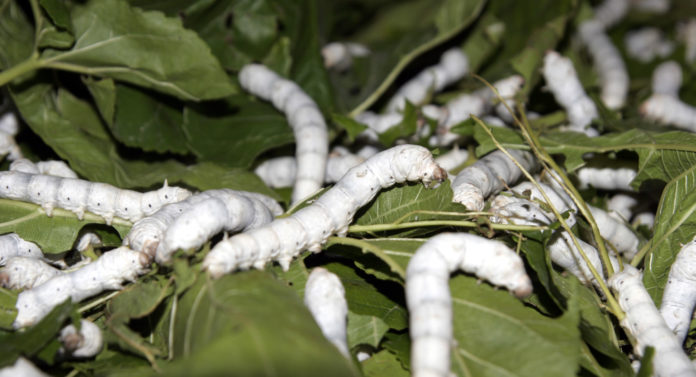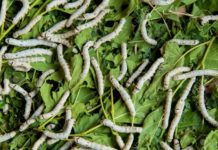What is sericulture?
Sericulture is the production of silk by using silkworms as a primary source, the process starts from collecting silkworm from the mulberry leaves. There are many commercial species of silkworms Bombyx mori (domestic silk moth) is the most used silkworm for the process.
Sericulture is an agro-based industry, these industries are very useful for the economic development of the nation, many developing countries like China, India, Pakistan, Brazil, Thailand, Vietnam, Indonesia, Egypt, Iran, Sri Lanka and many countries are following sericulture for their countries economic development. The primary product silk is a fabric, silk is the queen of fibres and queen of textiles. Silk is believed to be the ancestry of China.
Stages that Sericulture involves
- Mulberry Cultivation
- Silkworm Rearing
- Pest and Diseases Management
- Cocoon Harvesting and Processing
- Waste Management
This topic has large content, so for the reader’s convenience I divided these sub-topics into a separate article, so please “USE CLICK HERE “To read extra information about the topic
Mulberry Cultivation
Silkworms are fed only by mulberry leaves, the leaves are grown under varied climatic conditions varying from temperate to tropical. The quality and quantity of the leaf make a good cocoon harvest, Mulberry leaf was a prime source for the sericulture.
Silkworm Rearing
Silkworm rearing, it is the section which worms are grown for the production of silk. Silkworm is the larva or caterpillar of the “Bombyx mori” moth. Normally, a female silkworm produces about 500 to 600 eggs at mulberry leaves before it dies, these eggs are hatched into larva in cool and pleasant conditions.
Pest and Diseases Management
Management of pest and disease are an important process in Sericulture. The health of a plant and silkworm will determine the good silk production.
Cocoon Harvesting and Processing
Cocoon is a pupal casing created by moth caterpillars (Bombyx mori ), and by other insects also. A Single cocoon contains raw silk from 300 to about 900 m long. To make 1 pound of silk we need 2,000 to 3,000 cocoons. These cocoons are the basic and last material to get fine silk.
Waste Management
In Sericulture, we have many wastes produced by silkworms, many of them are not aware of waste management. We can utilize mulberry leaves which are leftover on rearing bead and other wastes from silkworm by preparing compost, it contains high nutritive values which we can use for farming lands.
Note
To get more details about the topics, click the buttons below on every introduction.












